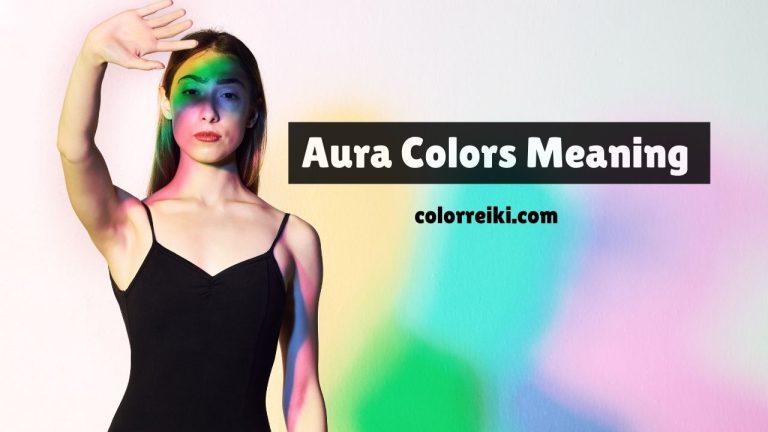What Are Visions During Meditation And How To Get Them
Meditation is a profound practice that has been cherished for centuries as a means of achieving mental clarity, emotional balance, and spiritual enlightenment. It allows individuals to access deeper layers of consciousness, offering a unique opportunity to connect with the inner self and the universe. One of the intriguing aspects of meditation that many practitioners encounter is the experience of visions. These visions, which appear during deep meditation, can range from simple geometric shapes to vivid, symbolic images and scenarios. They often carry significant meaning and can be a powerful tool for personal growth, insight, and spiritual connection.
Knowing the significance of these visions and how to interpret them is crucial for fully embracing their potential. This article aims to provide detailed guidance on what these visions mean, how they occur, and how to work with them effectively in your meditation practice.

Visions During Meditation
Visions during meditation are a natural occurrence that can provide deep insights into your subconscious mind and spiritual journey. These visions often arise when the mind reaches a state of deep relaxation, allowing the subconscious to communicate through visual imagery. To fully appreciate and harness the power of these visions, it’s important to understand how they manifest and what they might signify.
What Are Visions During Meditation?
Visions during meditation are spontaneous mental images, symbols, or scenes that appear in the mind’s eye while the individual is in a meditative state. These visions are not random; they are a reflection of the mind’s deeper layers, often representing thoughts, emotions, or spiritual insights that are not easily accessible during normal waking consciousness.
The occurrence of these visions is closely tied to changes in brainwave activity. When you meditate deeply, your brain shifts from the usual beta state (associated with active thinking) to alpha and theta states. The alpha state is associated with relaxation and creativity, while the theta state is linked to deep meditation and access to the subconscious mind. It is during these states that the mind becomes more visual and symbolic, allowing visions to emerge.
Different Types of Visions
Visions during meditation can manifest in various forms, each with its unique significance:
- Images: These are the most common types of visions and can include faces, landscapes, animals, or objects. These images often hold personal or symbolic meaning related to the meditator’s life or spiritual path.
- Symbols: Common symbols like eyes, flowers, or geometric patterns may appear during meditation. These symbols can represent deeper aspects of the subconscious mind or spiritual messages that need attention.
- Scenarios and Storylines: Some meditators experience entire scenes or storylines, similar to a vivid dream. These scenarios often carry significant emotional or spiritual messages, providing insight into unresolved issues or guidance for the future.
These visions are a way for the subconscious mind to communicate with the conscious mind, offering insights and guidance that can lead to personal and spiritual growth.
How to Get Visions in Meditation
To experience visions during meditation, it’s important to create the right conditions that encourage their emergence. While visions can occur spontaneously, some certain practices and techniques can make them more likely to appear. By setting intentions, using visualization, and practicing mindfulness, you can increase the chances of having meaningful visions during your meditation sessions.
1) Setting Intentions and Focus
To encourage visions during meditation, it is essential to start with a clear intention. Before you begin your meditation session, take a moment to set a specific intention for what you wish to achieve or explore. This intention acts as a guide for your subconscious mind, making it more likely that relevant visions will arise during your practice. For example, you might set an intention to gain clarity on a particular issue in your life or to connect with your inner self on a deeper level.
2) Using Visualization and Imagery
Visualization is a powerful tool that can help induce visions during meditation. By focusing on a specific image or scenario, you can stimulate the mind’s visual centers and encourage the emergence of related visions. Start by imagining a peaceful scene, such as a serene landscape or a symbol that resonates with you. As you focus on this image, allow your mind to explore and expand upon it, welcoming any additional imagery that may arise.
3) Practicing Mindfulness and Awareness
Mindfulness plays a crucial role in allowing visions to surface during meditation. By staying fully present and aware during your practice, you create the mental space needed for visions to emerge naturally. Instead of forcing images to appear, simply observe whatever arises in your mind’s eye with an open and non-judgmental attitude. The more you practice this mindful awareness, the more likely it is that visions will begin to surface during your meditation sessions.
Types of Meditations That Produce Visions
Different types of meditation practices can lead to the emergence of visions, each offering unique pathways to accessing the subconscious mind. By exploring various meditation techniques, you can discover which methods resonate most with you and are most likely to produce meaningful visions.
1) Visualization Meditation
Visualization meditation involves focusing on a specific image, scenario, or symbol to deepen the meditative experience. This technique is particularly effective for inducing visions because it actively engages the visual centers of the brain. As you practice visualization meditation, the images you focus on may evolve or expand, leading to spontaneous visions that carry deeper meanings and insights.
2) Guided Meditation
Guided meditation, where a teacher or recording leads you through a series of visualizations or scenarios, can also be a powerful way to induce visions. The guided imagery provided during the session acts as a catalyst for your subconscious mind, triggering your inner images to emerge. This type of meditation is especially useful for beginners who may need assistance in accessing their inner visual world.
3) Kundalini Meditation
Kundalini meditation is a spiritual practice that focuses on awakening and channeling the Kundalini energy that lies dormant at the base of the spine. As this energy rises through the chakras, it can lead to powerful visions, often accompanied by intense spiritual experiences. The visions that arise during Kundalini meditation are often vivid and carry significant spiritual meaning, reflecting the meditator’s journey toward higher consciousness.
Common Types of Visions During Meditation
As you delve deeper into your meditation practice, you may begin to notice recurring themes and types of visions. These common visions often carry symbolic meanings that can provide valuable insights into your personal and spiritual development.
1) Geometric Patterns and Shapes
One of the most common types of visions during meditation is the appearance of geometric patterns and shapes. These can include mandalas, fractals, and other intricate designs that seem to move or change dynamically. These patterns often symbolize the underlying order and interconnectedness of the universe and can be a reflection of the energy flow within your body.
2) Symbolic Images and Icons
Symbolic images, such as eyes, flowers, or animals, are another common type of vision. These symbols often carry deep personal or cultural significance and can provide insight into your subconscious mind or spiritual journey. For example, seeing an eye might represent heightened awareness or the opening of your third eye, while a flower could symbolize spiritual growth and blossoming.
3) Scenarios and Storylines
Some meditators experience visions that unfold like a movie or a dream, with characters, settings, and events that carry significant meaning. These scenarios can be deeply emotional and may offer insights into unresolved issues or provide guidance on your life path. For instance, you might see a scene from your past that needs healing or a future event that offers reassurance or direction.
Making Sense of Visions During Meditation
Interpreting and learning the visions that arise during meditation is a key aspect of integrating their insights into your life. By reflecting on personal symbolism, exploring emotional connections, and seeking guidance, you can unlock the deeper meanings behind your visions.
1) Reflecting on Personal Symbolism and Associations
Interpreting your visions starts with reflecting on what these images and symbols mean to you personally. Consider how the visions relate to your current life situation, emotions, or spiritual beliefs. Personal symbolism often holds the key to understanding the deeper meaning of your visions. For example, if you see a butterfly during meditation, it might symbolize transformation and new beginnings, especially if you are going through a significant change in your life.
2) Exploring Emotional and Intuitive Connections
Your emotions and intuition can provide valuable insights into the meaning of your visions. Pay attention to how you feel during and after the vision. Do certain images evoke strong emotions? Do you have an intuitive sense of what the vision is trying to communicate? These emotional and intuitive responses can guide you in interpreting the visions and understanding their relevance to your life.
3) Seeking Guidance from Spiritual Teachers or Mentors
If you are unsure about the meaning of a vision, seeking guidance from a spiritual teacher or mentor can be helpful. They can provide additional perspectives based on their experience and knowledge, helping you to gain a deeper understanding of the messages your subconscious mind is trying to convey. Additionally, discussing your visions with someone else can offer new insights that you might not have considered on your own.
Working with Visions During Meditation
Once you have interpreted your visions, the next step is to integrate their insights into your daily life. By working with your visions through journaling, creative expression, and mindfulness, you can deepen your connection to the messages they convey and apply their wisdom to your personal and spiritual growth.
1) Journaling and Reflection
One of the most effective ways to work with your visions is to journal about them immediately after your meditation session. Writing down the details of what you saw, how it made you feel, and any insights that came to mind can help you process the experience and uncover its deeper meaning. Over time, your journal can become a valuable resource, helping you track patterns and themes in your visions and how they relate to your personal and spiritual growth.
2) Creative Expression and Artistry
Creative expression, such as drawing, painting, or writing, can be a powerful way to bring your visions into the physical world and gain a deeper understanding of their significance. By translating your visions into art, you can explore them from a new perspective and allow their meaning to unfold in unexpected ways. This process of creative expression can also help you integrate the insights gained from your visions into your daily life.
3) Mindfulness and Continued Practice
Incorporating mindfulness into your daily life can help you stay connected to the insights gained during meditation. By practicing mindfulness, you can remain aware of the subtle messages your mind and body are sending you throughout the day, making it easier to recognize and work with the themes that arise in your visions. Continued meditation practice will also make it more likely for visions to occur and for you to understand their significance over time.
Conclusion
Visions during meditation offer a unique and powerful window into the subconscious mind, providing valuable insights for personal growth and spiritual development. By understanding and working with these visions, you can unlock deeper levels of awareness and connection with your inner self. Embrace the process, remain open to the messages you receive, and use the guidance provided by your visions to enrich your meditation practice and your life journey. As you continue on this path, remember that each vision is an opportunity to learn more about yourself and the universe around you.
How have these thoughts helped with life, and maybe with Chakra Colors, too? Do share!
Want more? Check out the Reiki Session Cost analysis.
FAQs
1. How to have visions during meditation?
To encourage visions during meditation, set a clear intention before you begin, use visualization techniques, and remain open to whatever images or scenarios arise during your session. Practice regularly to increase the likelihood of experiencing visions.
2. What can you see during meditation?
During meditation, you may see a variety of visions, including geometric patterns, symbolic images, and detailed scenarios. These visions often reflect your subconscious thoughts, emotions, and spiritual experiences.
3. What are the images I see when I meditate?
The images you see during meditation are often symbolic representations of your inner thoughts, feelings, and spiritual journey. They can provide valuable insights into your personal and spiritual development.
4. What is third eye vision during meditation?
Third-eye vision refers to the ability to perceive beyond the physical world during meditation, often involving spiritual or psychic visions. It is associated with the activation of the third eye chakra, which is linked to intuition and higher consciousness.
5. What are the symptoms of your third eye-opening?
Symptoms of your third eye-opening can include heightened intuition, vivid dreams, and the ability to perceive subtle energies. You may also experience visions during meditation that carry deep spiritual significance.
6. Are visions signs of your third eye-opening?
Visions can be a sign of your third eye-opening, as they often indicate that you are accessing a deeper level of consciousness and connecting with the spiritual realm. However, not all visions are related to the third eye, as they can also be expressions of the subconscious mind






